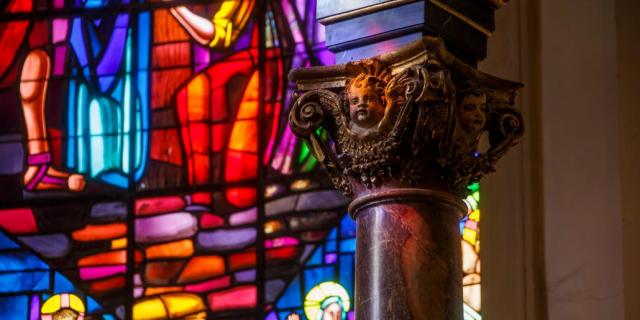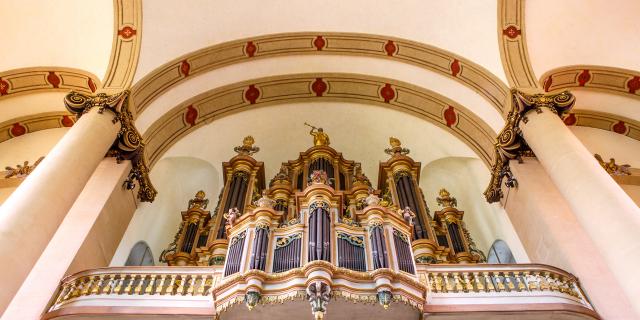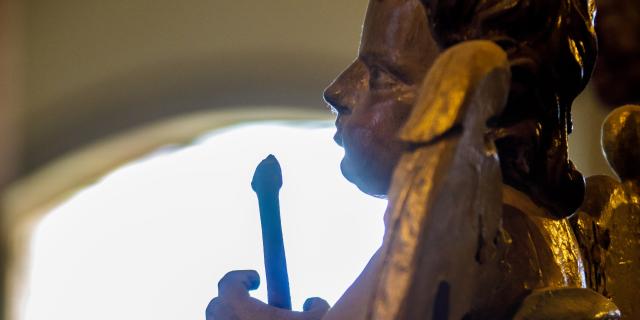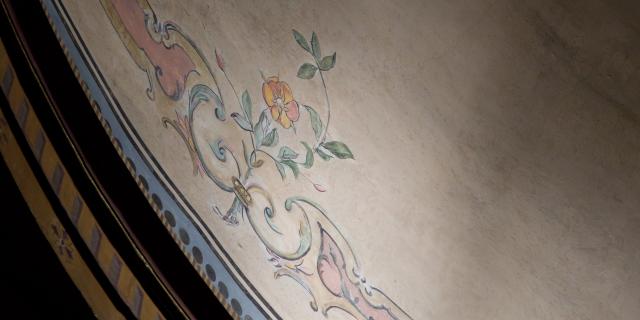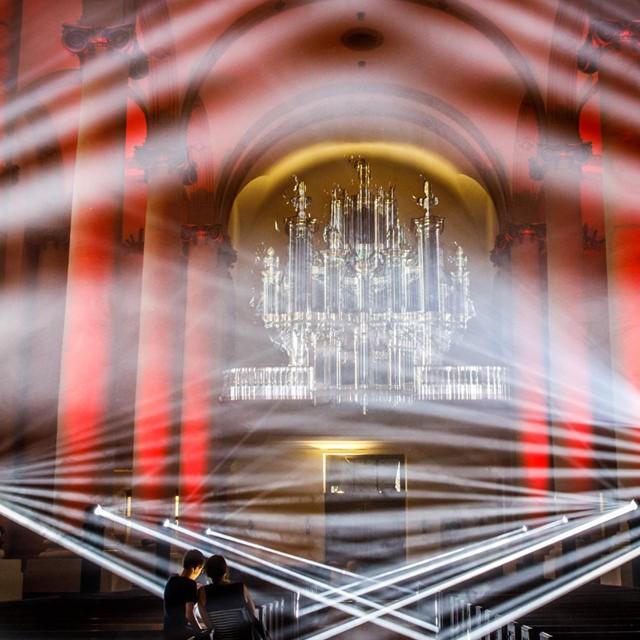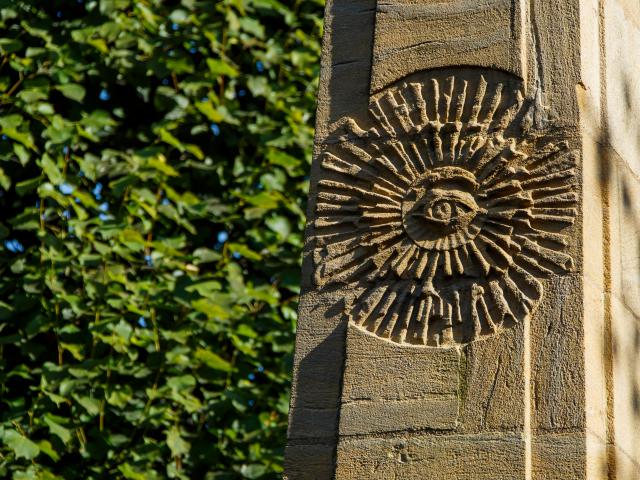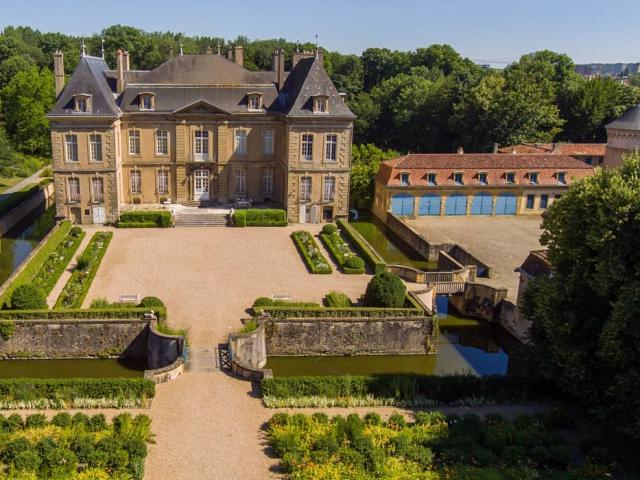A CHURCH
A STRONGHOLD
Entirely in yellow stone from Jaumont, it draws the eye with its understated exterior. A cross, a pediment with chubby cherubs, two drapes, two medallions of Saint Peter and Saint Paul. That’s it. For specialists, its description could include its pilasters with Ionic capitals. Vast vocabulary. Its two impressive towers, used as a lookout by soldiers, accentuate the majesty of its simplicity. All that remains is for you to open the door.
 Eglise Saint-Maximin
Eglise Saint-Maximin


